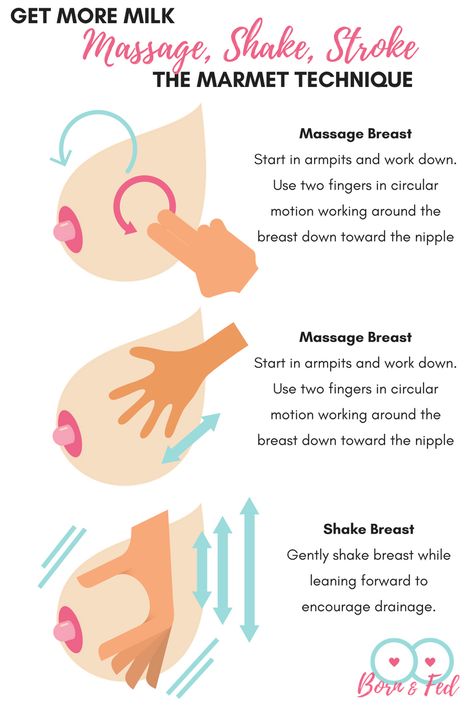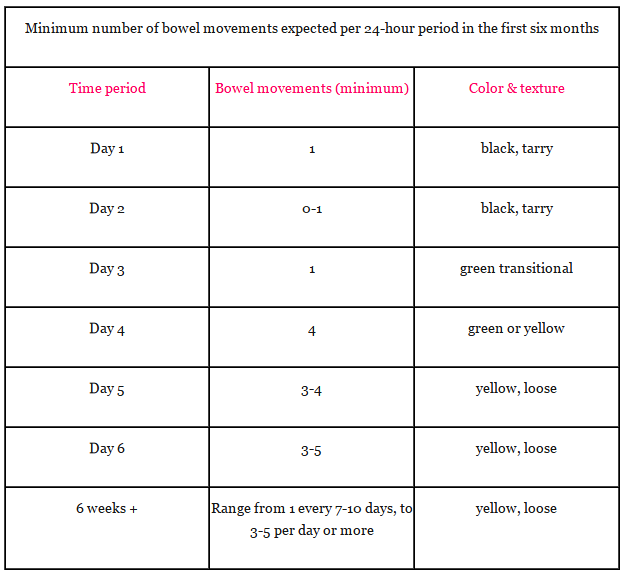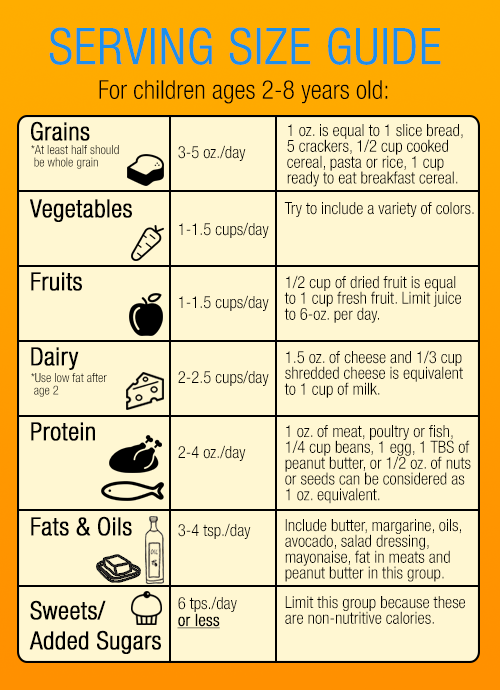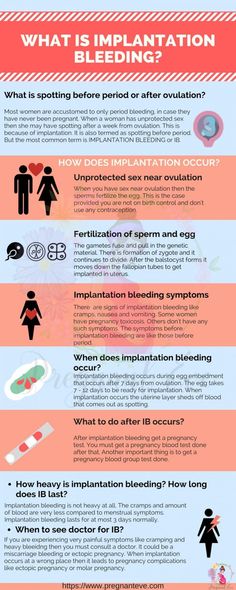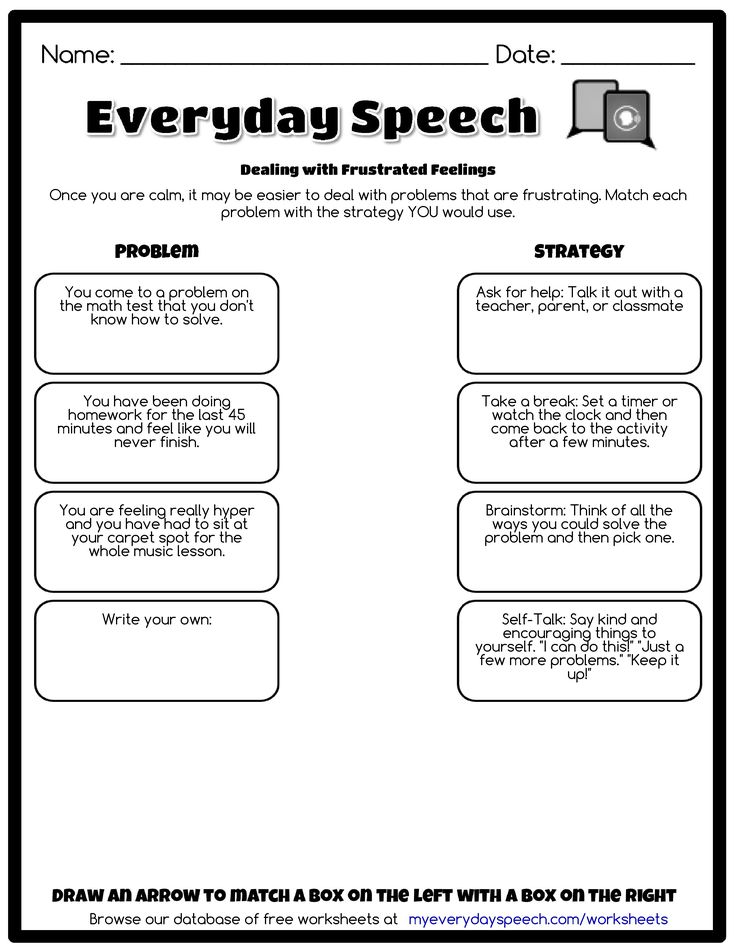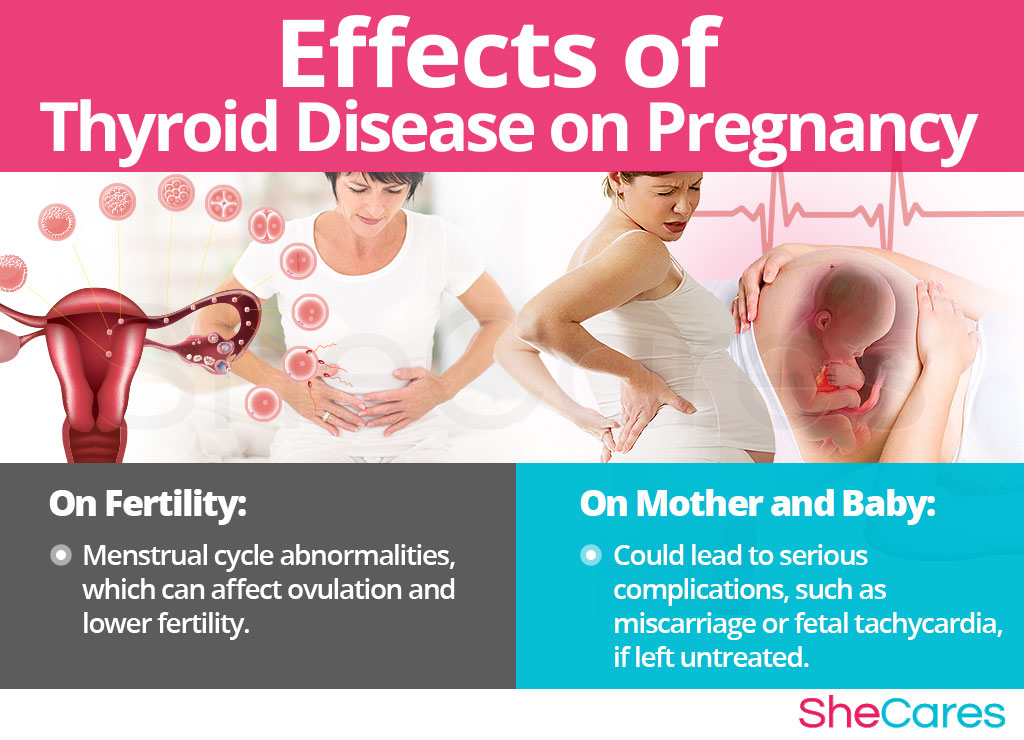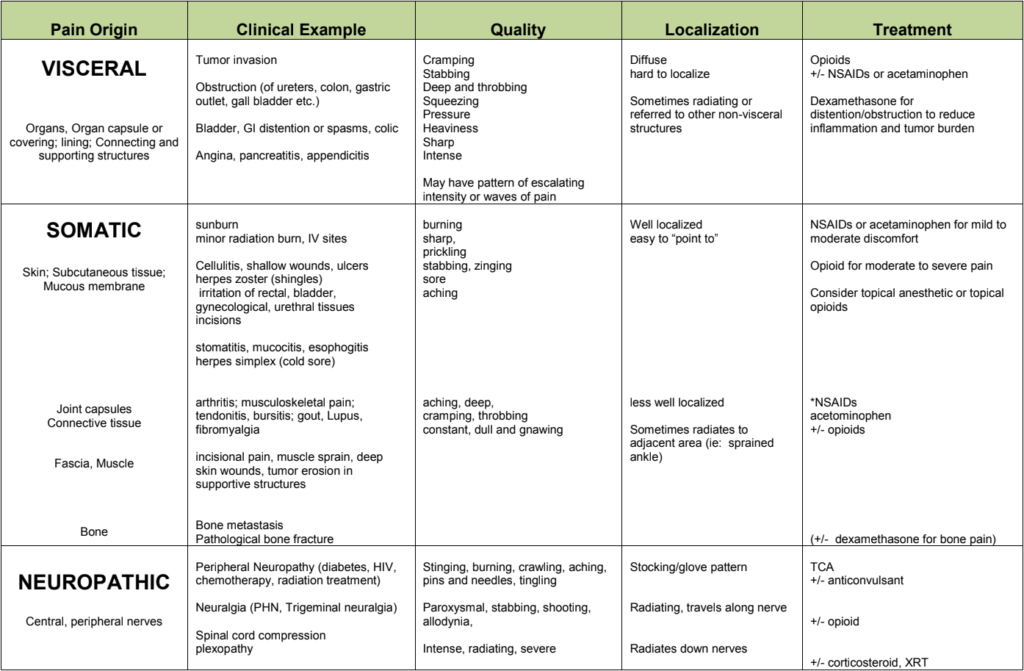How to get more milk
Low Milk Supply | WIC Breastfeeding Support
Many moms worry about low milk supply, but most of the time your body makes exactly what your baby needs, even if you don't realize it. There are also ways to tell if your baby is getting enough milk. If you aren't making enough, there are ways you can build your supply. And your WIC breastfeeding staff is always there to help!
Am I Making Enough Milk?
First, look for these signs that your baby is getting enough milk. For example, pay attention to the number of wet and dirty diapers and your baby's weight gain.
Things you should NOT worry about:
- How your breasts feel. Your breasts will feel softer and less full as your milk supply adjusts to your baby's needs. This does not mean you have low supply.
- If your baby nurses for shorter periods of time, such as only 5 minutes on each breast.
- If your baby's feeds are bunched together. This is called cluster feeding and happens when your baby starts nursing more often and for longer.
This can happen in the evenings or because of growth spurts.
- Not getting much milk when you express. Your baby is much more effective than a pump or hand expression at getting out milk. Find tips to help you pump.
If you are still concerned, talk to your baby's doctor about their growth.
Causes of Low Milk Supply
While most moms make plenty of milk, some do have low milk supply. This might happen if you:
- Limit your baby's breastfeeding sessions. Remember, the more you feed on demand, the more milk you make.
- Give your baby infant formula instead of breastfeeding.
- Introduce solid foods before baby is 4-6 months old.
- Take certain birth control pills or other medicine.
- Don't get enough sleep.
- Drink alcohol or smoke.
- Have had breast surgery.
Talk to your doctor if you have hepatitis B or C, herpes, or diabetes. These conditions may also affect milk supply.
Increasing Your Milk Supply
Breastfeeding frequently—especially in the first hours, days, and weeks—is the main way to increase your milk supply. Your body will make milk to meet your baby's demand.
Try these tips to help you make more milk:
- Breastfeed every time your baby is hungry. In the early weeks, your baby will eat 8-12 times every 24 hours. It's best not to put your baby on a strict feeding schedule. Follow your baby's cues, and let your baby tell you when it's time to eat.
- Make sure your baby is latching well.
- Offer both breasts at each feeding. Let your baby finish the first side, then offer the other side.
- Empty your breasts at each feeding.
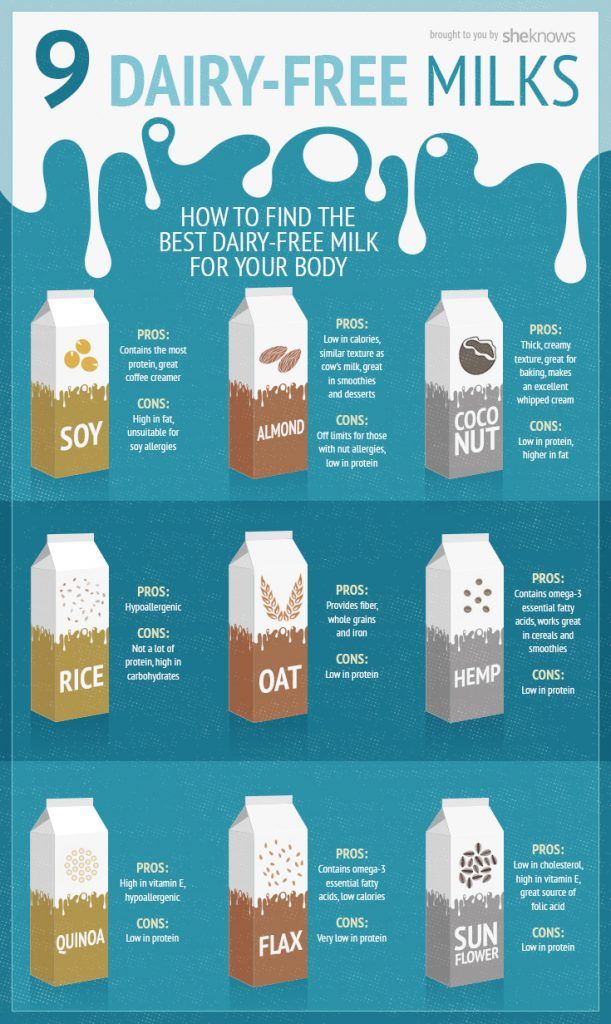 Hand express or pump after a feeding to draw out all the milk and signal your body to make more.
Hand express or pump after a feeding to draw out all the milk and signal your body to make more. - Avoid bottles and pacifiers in the early weeks. Feed your baby from your breast whenever you can.
- Get plenty of sleep, and eat a healthy diet.
- Pump or express your milk. Pumping or expressing milk frequently between nursing sessions, and consistently when you're away from your baby, can help build your milk supply.
- Relax and massage. Relax, hold your baby skin-to-skin, and massage your breasts before feeding to encourage your milk to let down.
- Take care of yourself. Get plenty of rest, eat well, drink enough fluids, and let others help you.
Consider Charting Your Progress
Record how often your baby is breastfeeding, for how long, and on which sides. If you are supplementing with infant formula, record how much your baby is getting and decrease the infant formula as your milk supply increases. WIC breastfeeding staff can help you determine how much infant formula your baby needs.
WIC breastfeeding staff can help you determine how much infant formula your baby needs.
Still Have Questions?
Contact your WIC breastfeeding expert. They can talk to you about supply concerns and give you tips to increase your supply to meet your baby's needs.
How to Produce More Milk
If you are struggling with increasing your breast milk supply, here is a look at some of the ways that you can maximize your milk production.
Share this content
How to Increase Milk Supply
Now that you and baby have gotten the hang of breastfeeding basics, it’s very common if you might be feeling unsure if you’re making enough milk. One of the many questions that might go through your mind is, “how can I start producing more milk?” If baby is gaining weight well, you probably don’t need to be worried about low milk supply. If you do feel you have low breast milk supply, be sure to talk with your doctor or a lactation consultant. You can also see below for a number of helpful ways to increase your milk supply:
Express your milk as often as possible.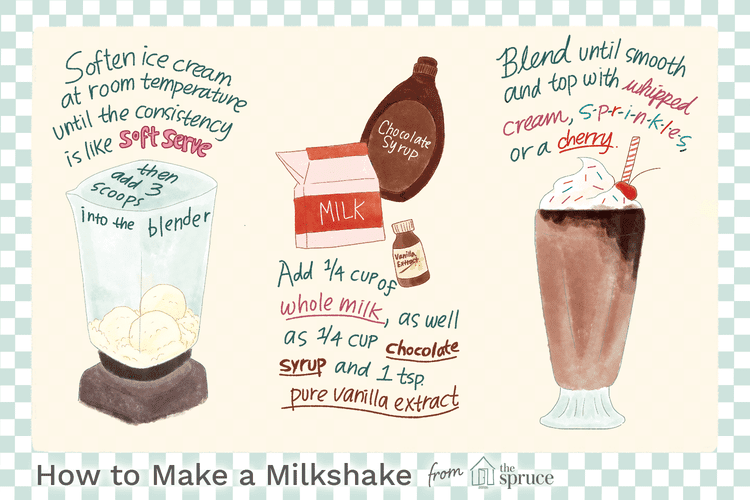 Your breast milk is produced on a supply and demand basis. How often and how much milk is removed from the breast are the main factors that determine how much milk will be made. In other words, the more often the milk is removed from the breasts (by baby or breast pump), the more milk the breasts will produce. Parents often ask if there is anything they can do to increase their supply of breast milk quickly. When it comes to production, though, regularity is a key factor.
Your breast milk is produced on a supply and demand basis. How often and how much milk is removed from the breast are the main factors that determine how much milk will be made. In other words, the more often the milk is removed from the breasts (by baby or breast pump), the more milk the breasts will produce. Parents often ask if there is anything they can do to increase their supply of breast milk quickly. When it comes to production, though, regularity is a key factor.
Increase how often you nurse and/or pump. You can increase the frequency that you empty your breasts to start signaling your body to produce more milk. Some moms have seen a great response when adding an evening or early-morning nursing or pumping session. Make sure you’re nursing or pumping at least eight times a day. Keep a printable feeding and pumping log on hand to carefully track your pumping sessions, your little one's feedings, and other important information to help you stay organized as your breast milk feeding routine changes.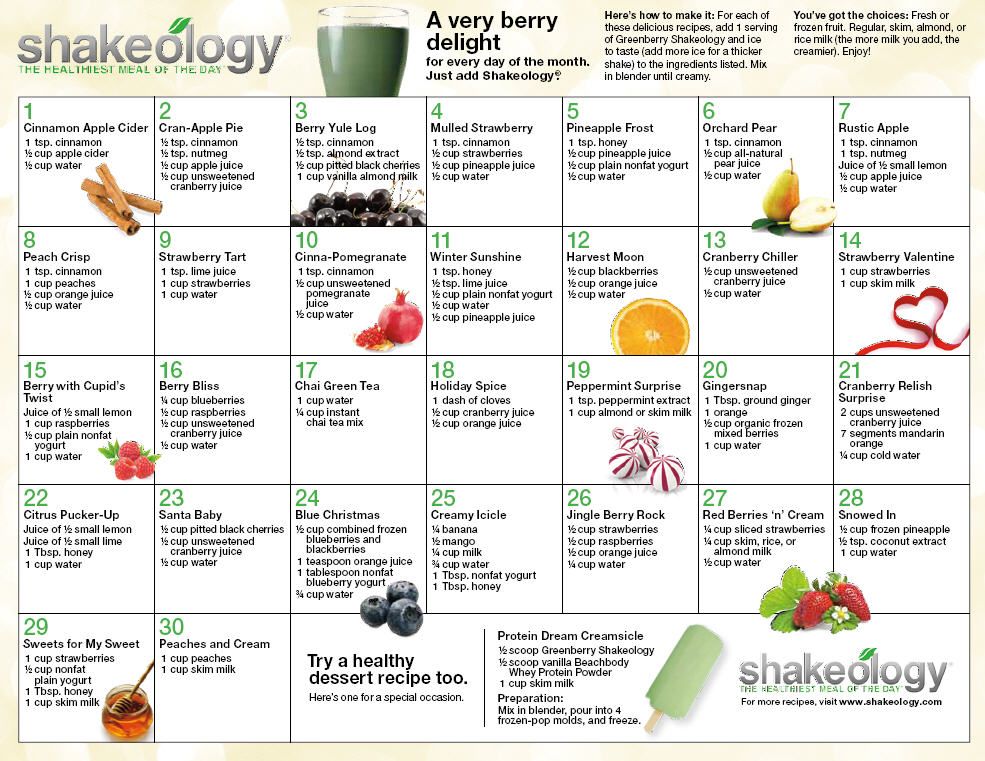
If you’re exclusively pumping your breast milk for your baby, double pumping (pumping on both sides at once) will yield more milk and decrease the amount of time you spend pumping. Even if you’re not getting the yield you want at first, don’t be discouraged. Over time, there is a good chance that your body will respond to the increased regularity of pumping or nursing by increasing your milk supply.
Nurse and pump. Another way to boost your supply is to breastfeed and then pump. Sometimes your breasts may not feel completely “empty” after nursing, so add a pumping session right after your baby finishes eating. This will stimulate your body to produce more and start increasing milk supply – even if it’s just a little bit.
Keeping a copy of current breast milk storage guidelines (also available in Spanish) on your fridge or at your pumping station can help you remember when to refrigerate, freeze, and feed your pumped milk to your little one, so none of that precious liquid gold goes to waste.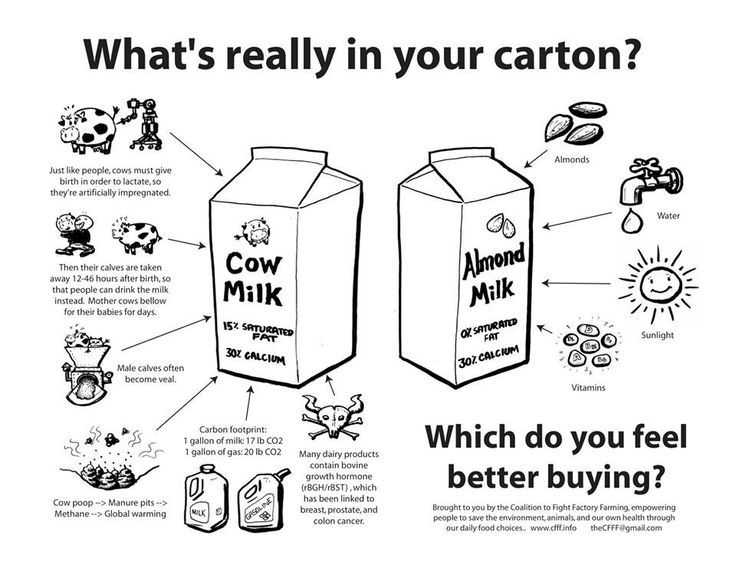 Every drop counts!
Every drop counts!
Focus on self-care. Taking good care of yourself can also impact your breast milk supply and potentially increase breast milk production. Try keeping healthy snacks and bottles of water stashed by your bedside table or the chair or couch where you most frequently nurse. Find time to relax and focus on yourself – take a bath, take a nap, read a book, whatever helps relax you. It may seem nearly impossible to find the time, but by taking care of yourself, you are taking care of your baby, too!
Consult with the professionals. If your concerns about low breast milk supply go beyond what’s been suggested, you can always reach out to a lactation professional. An International Board Certified Lactation Consultant can help determine what might be affecting your milk production and work with you to find ways to address and resolve these challenges.
Lactation enhancements. Some moms have turned to lactation enhancements (galactagogues) to increase breast milk production.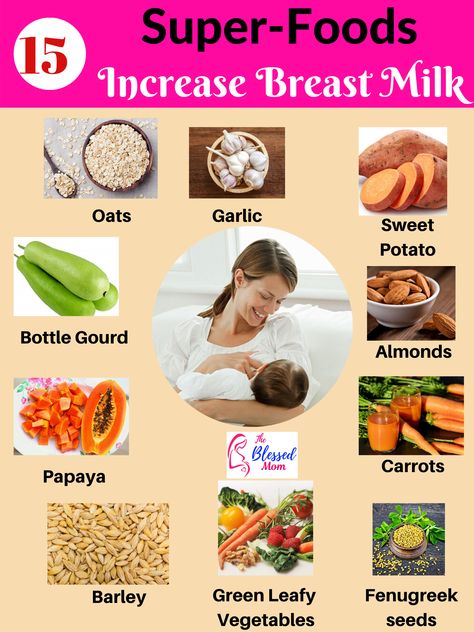 Studies are mixed as to their effectiveness, but each mom should explore these options for herself and make the appropriate choice for her breastfeeding journey.
Studies are mixed as to their effectiveness, but each mom should explore these options for herself and make the appropriate choice for her breastfeeding journey.
Teas, cookies, and smoothies containing herbs like fenugreek or alfalfa, or common ingredients like flaxseed meal, oats, and brewer’s yeast, are often used as natural lactation enhancements. Be sure to consult with your doctor or lactation consultant before utilizing these products to ensure their safety and efficacy.
Be Patient with Yourself
If you’re not getting the results you want right away, don’t be discouraged! Sticking to an established pumping and nursing routine, expressing often, communicating regularly with your doctor or a lactation consultant, and taking care of yourself are time-tested ways to increase your breast milk supply.
In the end, as long as baby is happy, healthy, and growing, you shouldn’t be worried about your breast milk supply. Always consult with your baby’s doctor (and yours!) or a lactation consultant if you’re concerned.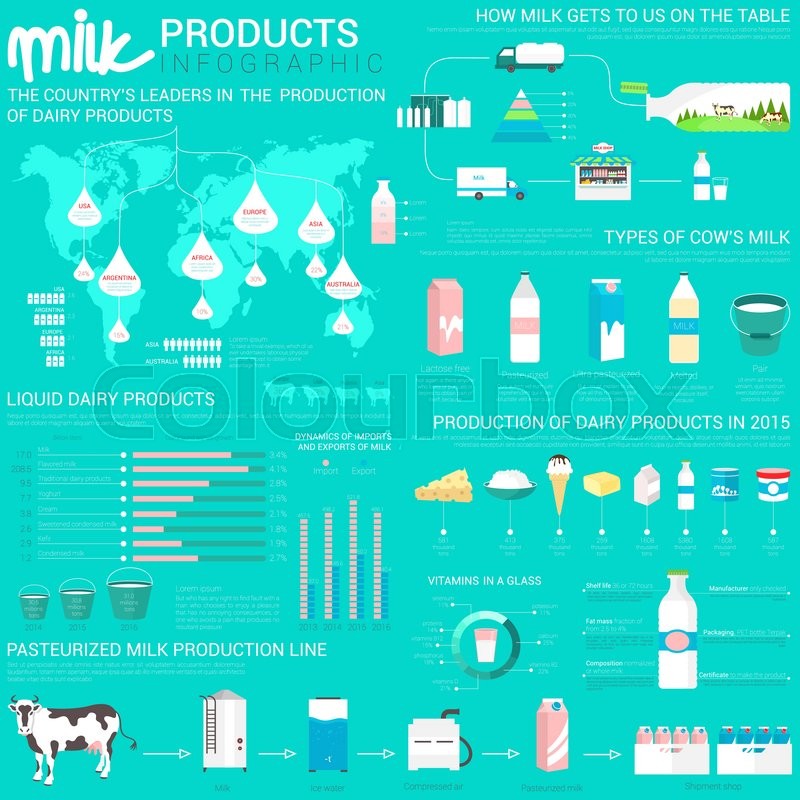 It’s okay (and totally normal!), if you need a little bit of help on your breastfeeding journey!
It’s okay (and totally normal!), if you need a little bit of help on your breastfeeding journey!
Signs of lack of milk | Improving lactation
Many mothers are concerned about insufficient milk production, but it is not always easy to find out if milk is really low. Read our article to understand if this is true and what can be done about it.
Share this information
“Do I have enough milk?” - a question that is often asked by young mothers. If your baby is healthy and growing well, there is no reason to worry. However, if you are still worried about milk production, it is best to consult a specialist as soon as possible. If everything is in order, he will be able to calm you down. In addition, you will not needlessly feed the baby formula, because of which milk production can really decrease. nine0003
Causes of insufficient milk supply
Some mothers do not produce enough breast milk for medical reasons, which include: approximately three days after birth). 1
1
If you have any of the conditions listed, contact your lactation consultant or healthcare provider.
How milk is produced
With the advent of milk, the breast begins to work on the principle of supply and demand. Each time after it is emptied, whether it is feeding the baby or pumping, even more milk will be produced.
This is why milk production may be reduced if you give formula to your baby - your body will not get the signal to produce more milk because it will remain.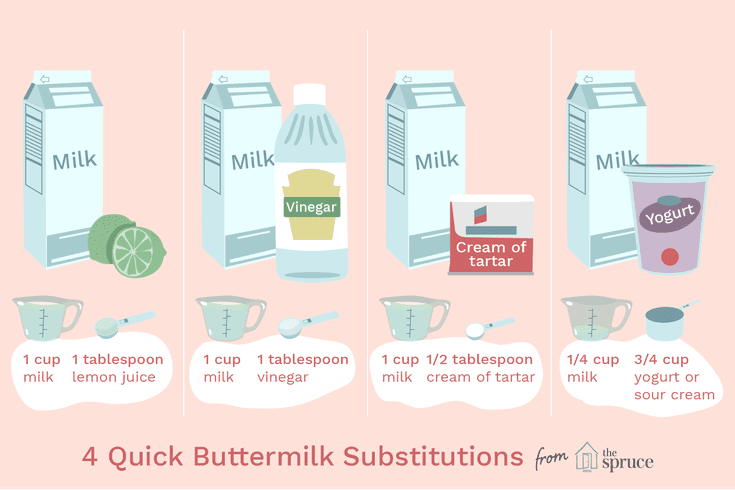
The way your baby eats also affects milk production. The more often and better he sucks the breast, the bigger it will be. If your baby eats only a small portion at one feeding, it is necessary to express milk regularly to maintain the level of its production. Read more about this below. nine0003
Signs that the baby is not getting enough milk
Although low milk production is rare, the baby may have difficulty feeding in the first few weeks, but for other reasons. You may not be feeding him often enough or for enough time, especially if you're trying to stick to a specific schedule. The baby may not latch on properly, or it may have features that make it difficult to take in milk. nine0003
The following signs indicate that the baby is not getting enough milk:
- Poor weight gain. In the first few days of life, newborns normally lose 5 to 7%, and sometimes even up to 10%, of their birth weight. However, after that, they should gain at least 20–30 g per day and regain their birth weight by 10–14 days.
 5,6,7 If your baby has lost 10% or more of their weight in the early days, or has not started gaining weight by 5-6 days, you should contact your doctor immediately. nine0018
5,6,7 If your baby has lost 10% or more of their weight in the early days, or has not started gaining weight by 5-6 days, you should contact your doctor immediately. nine0018 - Not enough wet and soiled diapers. A good indicator of whether a baby is getting enough milk is the number of diapers used per day. Check out our article detailing the norm for wet and soiled diapers in Breastfeeding Your Newborn: What to Expect in the First Week. Seek medical advice if something bothers you or you notice that the number of soiled diapers has begun to decrease. nine0018
- Dehydration. If your baby has dark urine, dry mouth or jaundice (yellowing of the skin or eyes), or baby is lethargic, has lost appetite, and may be dehydrated. 6 Dehydration can be caused by fever, diarrhoea, vomiting or overheating. If you notice any of these symptoms, seek medical attention as soon as possible.
Misconceptions about lack of milk
Newborns usually eat very frequently, about 10-12 times a day or every two hours. This does not mean that they do not have enough milk. Keep in mind that breastfeeding is also about comfort, so it's hard to tell how much milk a baby eats at each feed as the amount can vary.
This does not mean that they do not have enough milk. Keep in mind that breastfeeding is also about comfort, so it's hard to tell how much milk a baby eats at each feed as the amount can vary.
You have enough milk even if:
- the child wants to eat often;
- the child does not want to be laid down;
- the child wakes up at night; nine0018
- feeding is fast;
- feeding takes a long time;
- after feeding, the child takes another bottle;
- Your breasts are softer than in the first weeks;
- milk does not leak or has stopped leaking;
- You cannot express much milk;
- You have small breasts.
What to do about insufficient milk production
If you suspect that your baby is not getting enough milk, contact a lactation consultant or your doctor. He will determine if you have enough milk and check how the baby is latch-on and if he is getting enough milk. He may also suggest changing the feeding position or the way the baby is attached to the breast to make it easier. nine0003
nine0003
Also try holding your baby close to you more often to increase skin-to-skin contact before and during feedings. This stimulates the production of the hormone oxytocin, which promotes milk flow. Use relaxation techniques, such as listening to your favorite soothing music, to reduce anxiety that can negatively impact milk production. 8
With proper support, most under-lactating mothers can breastfeed their babies at least partially, and some manage to normalize production. nine0003
If your baby is unable to get enough milk directly from the breast (perhaps because he was born prematurely or has special needs), you need to express milk to support his production. Your doctor may prescribe you special drugs that stimulate lactation.
If you are unable to express enough milk, you will need to supplement your baby with donor milk or formula. This should also take place under the supervision of a physician. The Supplemental Nursing System (SNS)* is a great way to help your baby get all the milk he needs at the breast.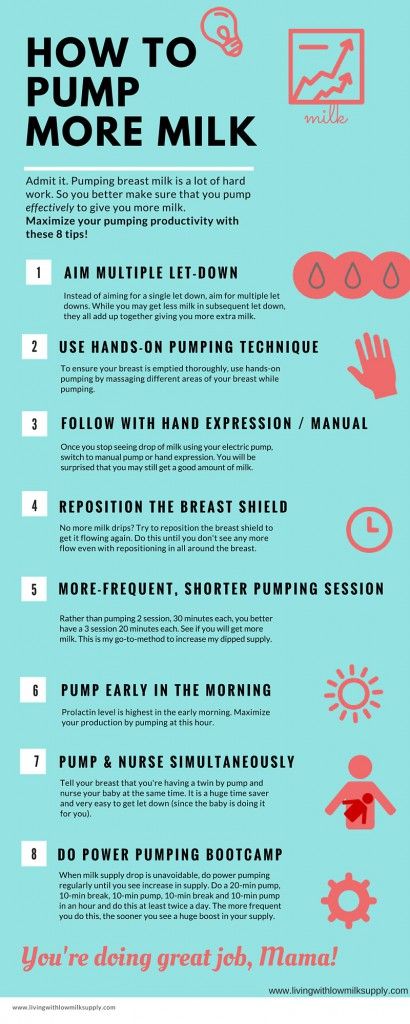 nine0003
nine0003
How to increase your milk production with a breast pump
If you need to increase your milk production in the first five days after giving birth, you can use a dual electronic breast pump with lactation start technology, such as the Medela Symphony**. Such a breast pump imitates the sucking of the breast by a child and helps to increase milk production in the future. 9
After your milk comes in, double pumping allows you to get more milk in less time. nine0016 10 This method helps to better empty the breast, which also improves lactation.
Although every mother is different, it is often recommended to express milk immediately or one hour after a feed. This may seem strange, since it is usually easier to express milk from a full breast. However, the pumping session should be seen as an "investment in tomorrow."
You will probably only be able to express a little milk at first, but don't be discouraged - if you express regularly, your milk supply will increase.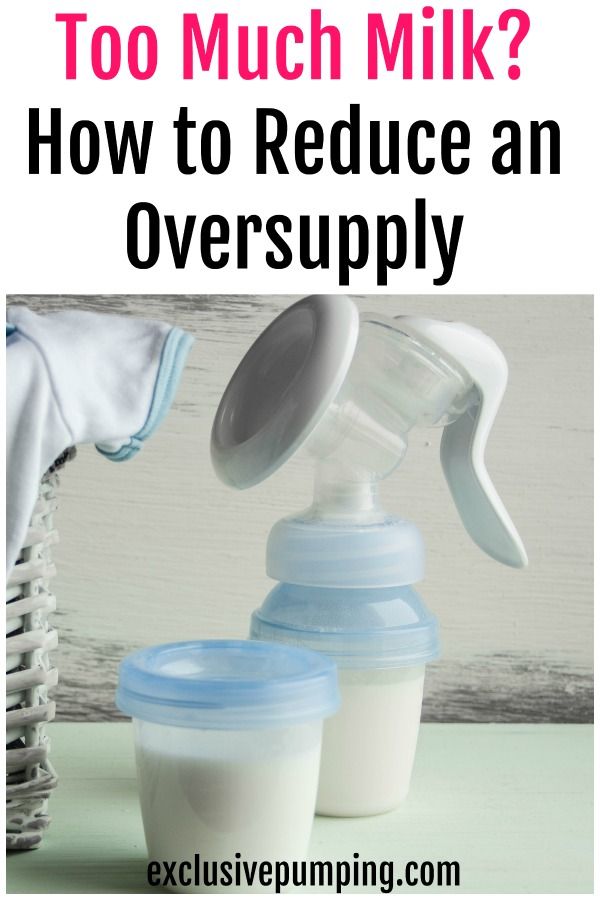 Try to empty your breasts - by putting your baby to your breast or expressing milk - 8 to 12 times a day, including one nightly session, when your levels of prolactin (the hormone responsible for producing milk) are highest. The more often you empty your chest, the better. After two to three days of regular pumping, you will notice a significant increase in milk production. For tips on how to get more milk with every pump, see Tips for Using a Breast Pump. nine0003
Try to empty your breasts - by putting your baby to your breast or expressing milk - 8 to 12 times a day, including one nightly session, when your levels of prolactin (the hormone responsible for producing milk) are highest. The more often you empty your chest, the better. After two to three days of regular pumping, you will notice a significant increase in milk production. For tips on how to get more milk with every pump, see Tips for Using a Breast Pump. nine0003
Pumping with massage to get more milk
If your baby is not lating at all or you are not yet able to express enough milk for him, a technique called “massage pumping” may be helpful. It helps mothers increase the amount of milk they get in one pumping session. 11.12 The whole process takes about 25-30 minutes. Remember that the better you empty your breast, the faster milk is produced in it.
A few simple steps are required:
- Massage your breasts.
- Perform a double pump while wearing a special bustier top that allows you to keep your hands free.
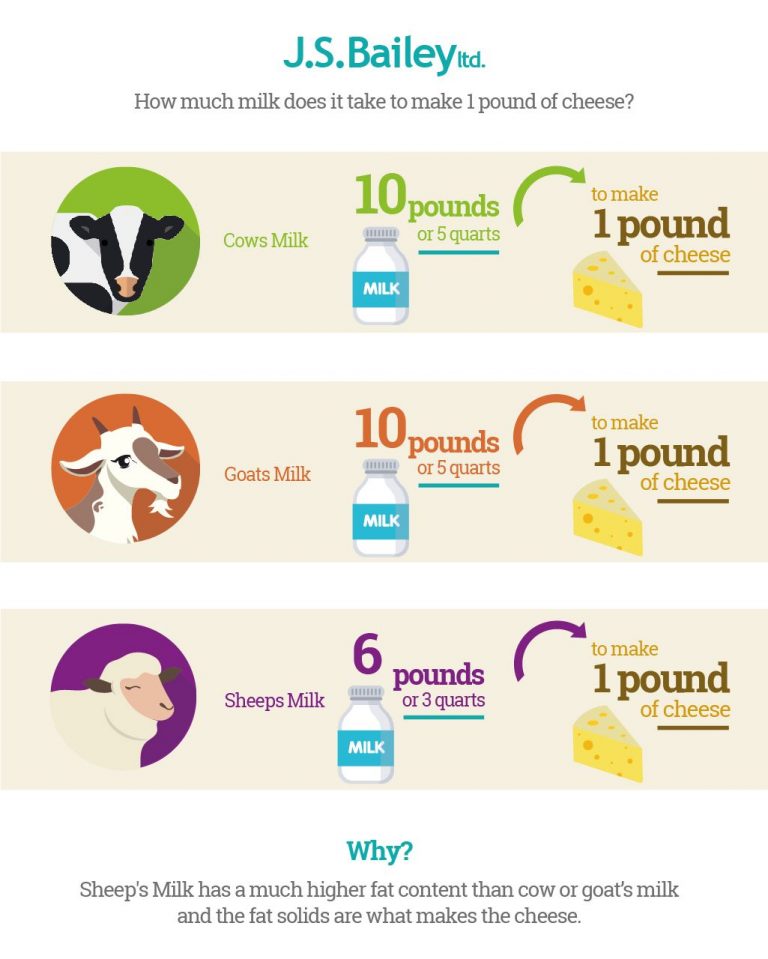
- While expressing, squeeze the chest with all fingers for a few seconds. Release and repeat. Squeeze both breasts until the milk flows in a thin stream.
- Massage the chest again.
- Express milk manually or with a single breast pump, squeezing each breast in turn to empty them as completely as possible. nine0018
When your baby starts to gain weight and milk production increases, you can switch to exclusive breastfeeding.
Literature
1 Pang WW, Hartmann PE. Initiation of human lactation: secretory differentiation and secretory activation. J Mammary Gland Biol Neoplasia. 2007;12(4):211-221. - Pang, W.W., Hartmann, P.I., "Lactation initiation in the lactating mother: secretory differentiation and secretory activation." J Mammary Gland Biol Neoplasia. 2007;12(4):211-221. nine E et al . Breastfeeding in polycystic ovary syndrome. Acta Obstet Gynecol Scand. 2008;87(5):531-535. - Wanky, I. et al., "Breastfeeding in the setting of polycystic ovaries." Akta Obstet Ginecol Scand. 2008;87(5):531-535.
Acta Obstet Gynecol Scand. 2008;87(5):531-535. - Wanky, I. et al., "Breastfeeding in the setting of polycystic ovaries." Akta Obstet Ginecol Scand. 2008;87(5):531-535.
3 Neifert MR et al. Lactation failure due to insufficient glandular development of the breast. Pediatrics. nine0148 1985;76(5):823-828. - Neifert M.R. et al., "Inability to Lactate Due to Deficiency of Glandular Breast Tissue". Pediatrix (Pediatrics). 1985;76(5):823-828.
4 Neifert M et al. The influence of breast surgery, breast appearance, and pregnancy-induced breast changes on lactation sufficiency as measured by infant weight gain. Birth. 1990;17(1):31-38. - Neifert M. et al., "Influence of breast surgery, breast appearance, and pregnancy-induced breast changes on milk supply as measured by weighing the baby." nine0148 Bers. 1990;17(1):31-38.
5 C Tawia S, McGuire L. Early weight loss and weight gain in healthy, full-term, exclusively-breastfed infants. Breastfeed Rev . 2014;22(1):31-42. - S. Tavia S., McGuire L., "Natural Weight Loss and Gain in Healthy, Exclusively Breastfed Full-Term Infants." Brestfeed Rev (Breastfeeding Review). 2014;22(1):31-42.
Breastfeed Rev . 2014;22(1):31-42. - S. Tavia S., McGuire L., "Natural Weight Loss and Gain in Healthy, Exclusively Breastfed Full-Term Infants." Brestfeed Rev (Breastfeeding Review). 2014;22(1):31-42.
6 Lawrence RA, Lawrence RM. Breastfeeding: A guide for the medical profession. 7th ed. Maryland Heights MO, USA: Elsevier Mosby; 2010. 1128 p . - Lawrence R.A., Lawrence R.M., "Breastfeeding: A guide for healthcare professionals." Seventh edition. Publisher Maryland Heights , Missouri, USA: Elsevier Mosby; 2010. P. 1128.
7 World Health Organization. [Internet]. Neonatal Care . 2012;12(2):112-119 - Keith D.R. et al., "Effects of listening to music on the quantity, fat content, composition and calorie content of breast milk in mothers of premature and seriously ill children. " Adv Neonatal Care. 2012;12(2):112-119
" Adv Neonatal Care. 2012;12(2):112-119
9 Meier PP et al. Breast pump suction patterns that mimic the human infant during breastfeeding: greater milk output in less time spent pumping for breast pump-dependent mothers with premature infants. J. Perinatol. nine0148 2012;32(2):103-10. - Meyer P.P. et al., "Pumping patterns that mimic breastfeeding behavior: more milk and less time for constantly pumping mothers of preterm infants." J Perinatol (Journal of Perinatology). 2012;32(2):103-10.
10 Prime DK et al. Simultaneous breast expression in breastfeeding women is more efficacious than sequential breast expression.Breastfeed Med . 2012;7(6):442-447. - Prime D.K. and co-authors. "During the period of breastfeeding, simultaneous pumping of both breasts is more productive than sequential pumping." Brestfeed Med (Breastfeeding Medicine). 2012;7(6):442-447.
11 Stanford University School of Medicine [Internet]. Stanford, CA, USA: Maximizing Milk Production with Hands-On Pumping; 2017. [ Accessed 04/30/2018]. - Stanford University School of Medicine [Internet]. Stanford, CA, USA: "Increased milk production from hand expression"; 2017. [Page accessed 04/30/2018].
Stanford, CA, USA: Maximizing Milk Production with Hands-On Pumping; 2017. [ Accessed 04/30/2018]. - Stanford University School of Medicine [Internet]. Stanford, CA, USA: "Increased milk production from hand expression"; 2017. [Page accessed 04/30/2018].
12 Morton J et al. Combining hand techniques with electric pumping increases milk production in mothers of preterm infants. J. Perinatol. 2009;29(11):757-764. - Morton J. et al., "Manual pumping combined with an electric breast pump increases breast milk production in mothers of preterm infants." J Perinatol (Journal of Perinatology). 2009;29(11):757.
Read instructions before use. Consult a specialist about possible contraindications. nine0011
* RU No. ФСЗ 2010/07352 of 19.07.10
** RU No. ФСЗ 2010/06525 of 17/03/2021
How to use the breast pump | Tips for using your breast pump
It may take some time and patience to learn how to use a breast pump, but the results are well worth the effort.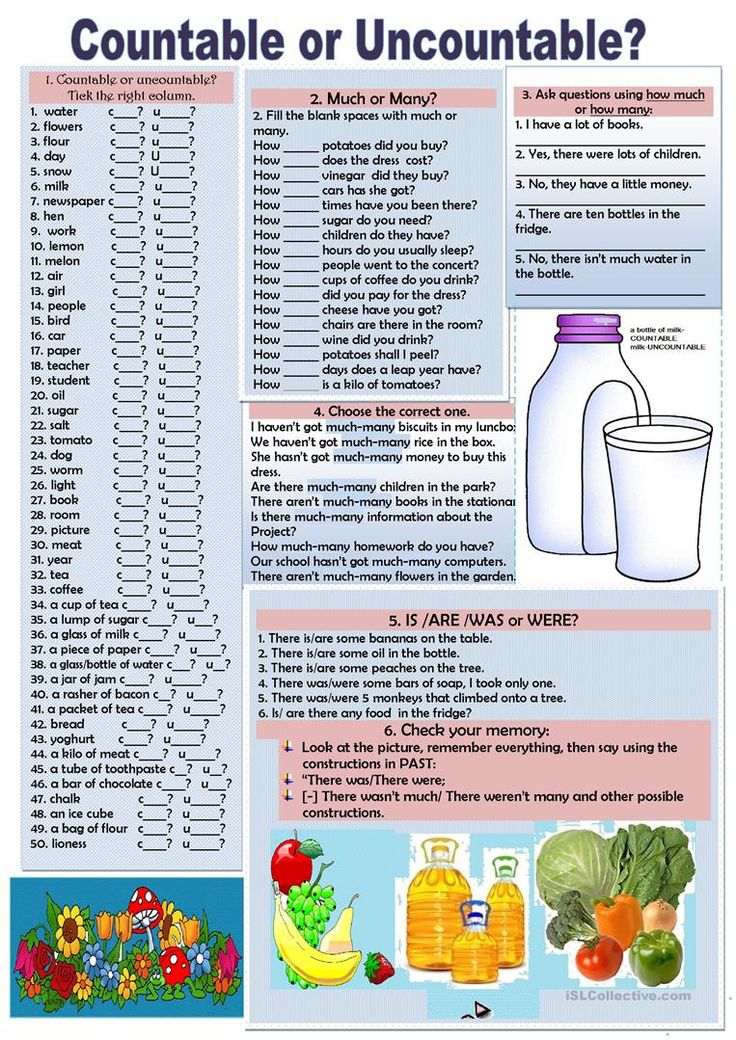 Find tips from Medela experts to help you learn how to pump with a breast pump.
Find tips from Medela experts to help you learn how to pump with a breast pump.
Share this information nine0003
Dr Nania Schärer-Hernández, Head Global Medical Affairs and Education, Medela:
Nania is a mother of two and the world's leading expert on lactation and breast milk composition. At Medela, she leads a team of specialists who prepare educational materials based on the latest research. The group develops guidelines for physicians and educates mothers around the world about the amazing benefits of breast milk.
As with any new business, it may take you some time to get used to using a breast pump. It's important to be patient and not get frustrated if you can't express enough milk right away. After all, a breast pump simply cannot give you the same tender feelings as a baby. However, over time, your body will get used to and learn how to trigger the flow of milk when using a breast pump, and the amount of milk you can express will increase. nine0003
nine0003
1. No need to rush to start pumping
For the first four weeks, you and your baby will work together to start and build milk production. If the baby is healthy and breastfeeding is normal, you will not need to express any additional milk. Pumping, however, can be very helpful if you need to be away from your baby for a while (see tip below). Otherwise, just enjoy spending time with your baby and be sure that even if you plan to pump regularly in the future, there is absolutely no need to "train" your body by pumping milk in the first few weeks. nine0003
2. Instances where the baby cannot breastfeed
If your baby cannot feed directly on the breast, for example because he was born prematurely or has special needs, or you have to be separated for some reason, start double pumping as soon as possible earlier.
Research has shown that starting pumping within the first few hours after birth (when a healthy baby usually breastfeeds for the first time) helps women produce more milk in the first days and weeks 1. 2 and gives the child the maximum chance in the future to feed exclusively on mother's milk.
2 and gives the child the maximum chance in the future to feed exclusively on mother's milk.
If your baby is expected to be born prematurely, need intensive care, or otherwise find it difficult to breastfeed, prepare ahead of time. Read up on pumping, stock up on equipment, and seek support from a lactation consultant or specialist.
Your maternity hospital most likely has a clinical double breast pump*, so ask them to show you how to use it. It is very important to express milk at a time when, under normal circumstances, you would breastfeed your baby. In this way, your breasts will receive a signal to continue producing milk. Try to start with 8 to 10 pumps per day 3 , and after the “arrival” of milk, continue to express with the same frequency.
3. Correct time
The first pumping must last at least 15 minutes.
Don't worry if you don't get much milk the first time. Regular use of a breast pump should stimulate your breasts and soon they will begin to produce more milk.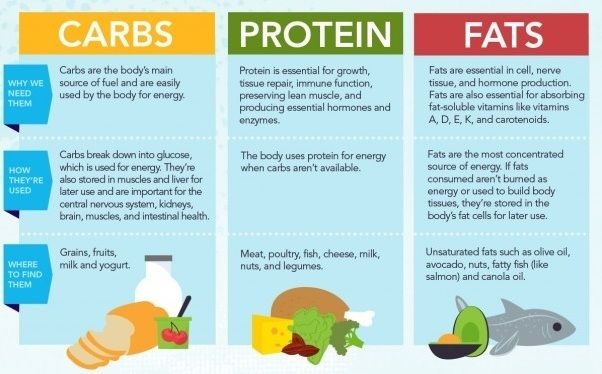
Some mothers are able to express the most milk an hour after feeding, while others prefer to express milk immediately after every second feeding. Try doing this at different times to see what works best for you. Once you have determined the optimal time, stick to this routine,
so that your body gets used to using a breast pump and tunes in to additional milk production. You may want to extend the intervals between pumping so that you can collect more milk later. But if you wait until your breasts are full, you won't be able to completely empty your breasts in one pumping 3.4 , so you need to express often and regularly.
4. Maintain hygiene
Always wash your hands before and after pumping, rinse all parts of the pump that come into contact with your baby's milk and mouth, and thoroughly sanitize them at least once a day. All parts of the breast pump must be completely dry before being stored in a clean bag or container until next use. nine0003
5.
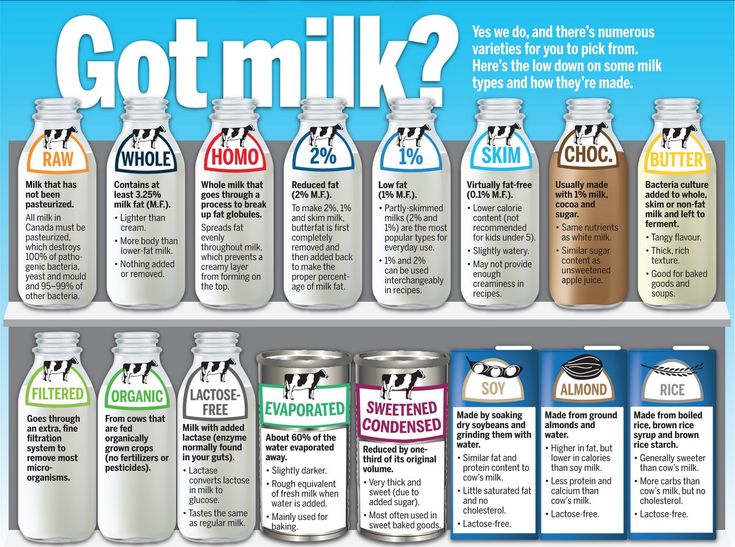 Prepare yourself
Prepare yourself Prepare everything you need before pumping so you don't interrupt the process. You may want to drink or eat, you may need a phone or TV remote control, bottles or storage bags to collect your expressed milk, and a diaper in case something spills.
The specially designed pumping top allows hands-free pumping, making it easier for you to set up your pump and do other things while you pump. nine0003
6. Get comfortable
The best position for pumping is the one you feel comfortable in
. To release the hormone oxytocin, which stimulates the flow of milk, it is very important to relax. Any discomfort or distractions can interfere with this process 5 , so choose a comfortable and quiet place to pump, and position yourself so that there is support under your back and shoulders.
If you are not wearing a pumping bustier top, hold the breast pump funnel between your thumb and forefinger and use your other fingers and palm to support your breasts.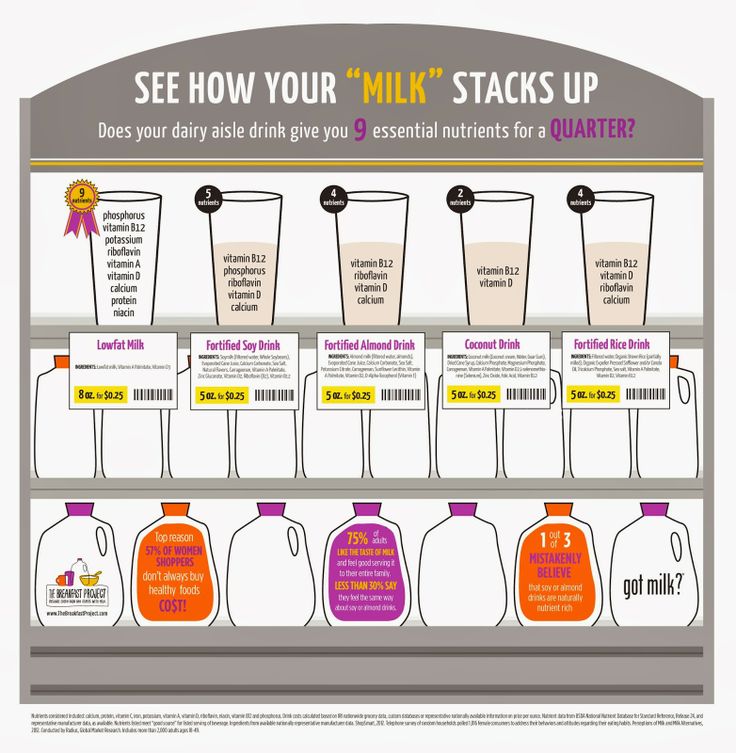 Carefully apply the funnel to the breast, do not apply too much pressure, as this can lead to compression of the breast tissue and make it difficult for milk to flow. nine0003
Carefully apply the funnel to the breast, do not apply too much pressure, as this can lead to compression of the breast tissue and make it difficult for milk to flow. nine0003
Some women benefit from deep breathing, soothing music, visualization of pleasant images, or relaxing back and shoulder massages from their partner.
7. Start a rush of milk
Most Medela* electronic and battery-powered breast pumps feature 2-Phase Expression technology, which mimics a baby's natural sucking rhythm (when quick and light sucking movements are followed by slower and more intense ones) to help trigger the rush milk. Breast massage before and during pumping 6 Warming the breasts 7 with a warm compress (eg flannel) before pumping also helps to increase milk flow and increase the amount received.
Researchers have found that skin-to-skin contact with the baby before and during pumping can also increase milk production 8 . This is due to the fact that the warmth and touch of the baby triggers the production of oxytocin in your body 9 . Some moms even find that pumping is best when
Some moms even find that pumping is best when
Feed the baby on one breast and pump from the other at the same time, as this creates additional stimulation.
If your baby is not with you, try looking at a picture or video of the baby while pumping, or smelling his clothes 10 . Any opportunity to connect with the baby during the pumping process also helps to increase the level of oxytocin and, accordingly, a better milk flow.
8. Take advantage of the rush
Many mothers don't feel the rush, so keep an eye on it while pumping. When milk trickles into the bottle or bag, this means that the rush has begun 11 .
If you are using a 2-Phase Expression technology breast pump, it will have a stimulation mode and a pumping mode. Normally, stimulation mode lasts about two minutes, but as soon as you notice trickles of milk, as described above, you will need to switch to pumping mode. The first flush usually produces about 36% of the total milk volume, so it must be used to collect more milk 12 .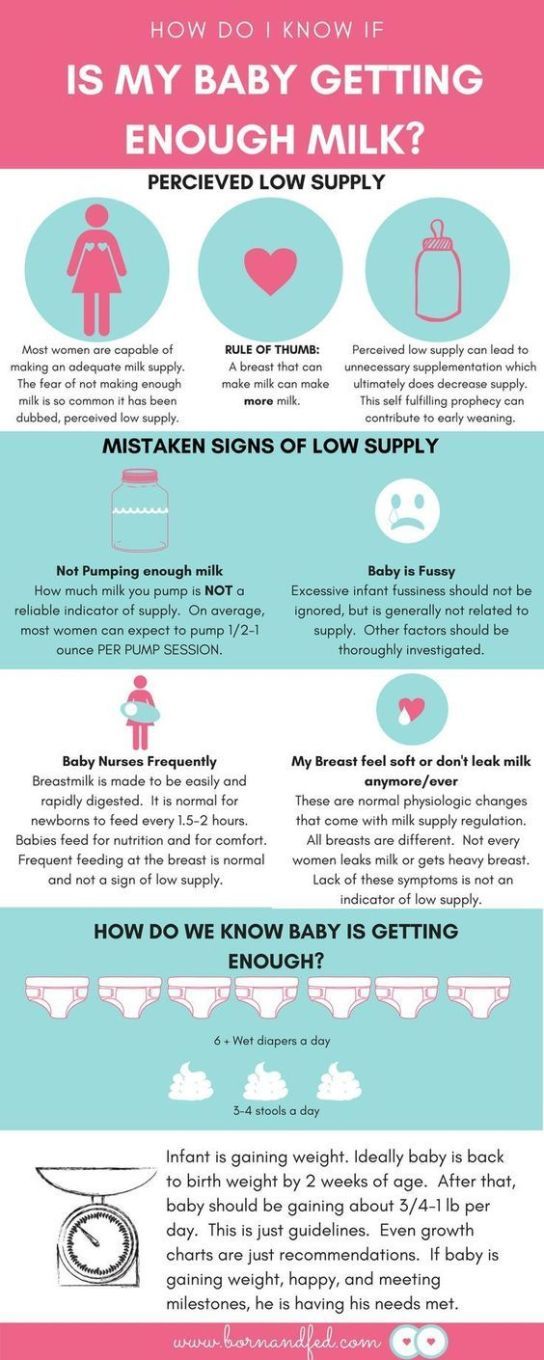
9. Find your most comfortable level
During the pumping phase, set the vacuum to the highest comfort level, the highest level setting on the breast pump that allows pumping to remain comfortable. Studies have shown that you can collect almost the same amount of milk as if you were breastfeeding your baby 13.14 .
To find the right level for you, increase the vacuum gradually until you feel slightly uncomfortable, and then lower it by one notch. nine0003
10. Determine the duration of your pumping
When your milk supply is established (after about 4-6 weeks), it will be easier for you to determine how many minutes to pump. This will save time. For some women, pumping takes longer, which is related to the number of hot flashes - it is they who determine how often and for how long milk is produced 4.15 . Surprisingly, each mother has her own unique “mode” of milk flow, while it remains the same during pumping and breastfeeding 16 .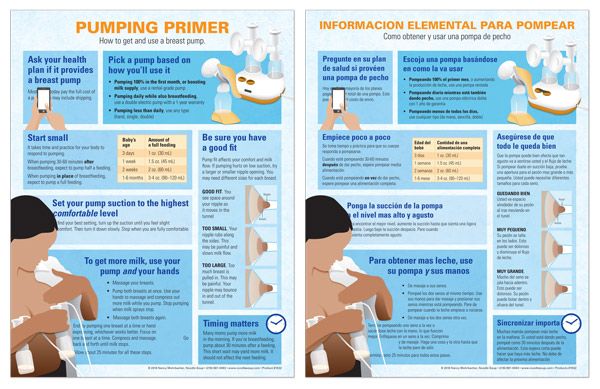
How do you define your own mode? Pick a time when you usually express the most milk and watch your pumping, noticing when the milk starts to trickle out of the nipple or when the milk starts to drain into the container.
Women who only have flushes at the start of pumping will be able to express most of their milk within 8 to 10 minutes, and increasing the duration of pumping will have no effect on how much milk they get. In contrast, women who experience multiple flushes or who have hot flashes later on may take 15 minutes or more to completely empty their breasts 15 .
11. Choose double pumping
If you plan to express milk regularly, it makes sense to purchase a double breast pump. Double pumping increases the level of prolactin, the hormone responsible for milk production 17 . Surprisingly, studies have shown that women who practice double pumping experience an extra boost of milk with each pumping session. This means that they express almost 1/5 more milk and this milk has a higher fat content compared to consecutive pumping from each breast 18 .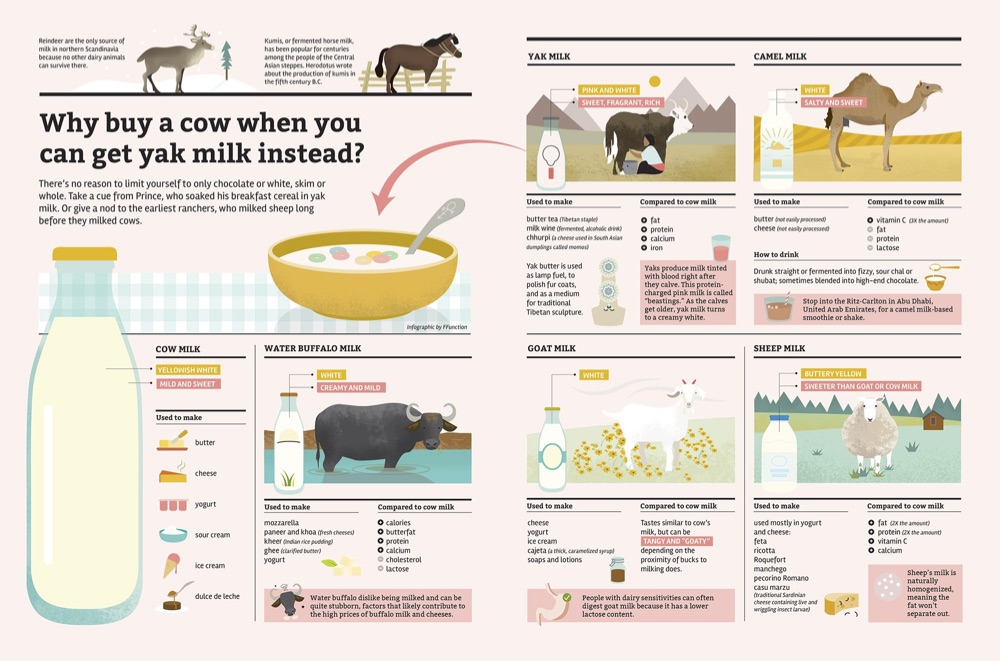 In addition to saving time, this creates a tangible benefit: You can get an extra bottle of milk in just a few sessions.
In addition to saving time, this creates a tangible benefit: You can get an extra bottle of milk in just a few sessions.
12. Don't be uncomfortable
Expressing breast milk doesn't have to be painful. If you experience discomfort when pumping, or if your nipples or breasts are blistered or chafed, try changing the pump mode.
Also check the size of the funnel (the bell-shaped part of the breast pump that fits against the breast). The funnel tunnel should fit snugly against the nipple, but leave enough room for the nipple to move freely back and forth without friction. During pumping, the tunnel should not rub against the skin or draw in too much of the areola (the dark area around the nipple) or breast skin around it. A funnel that does not fit well on the breast can result in reduced milk output, which is why Medela manufactures different sizes of breast shields. nine0481 premature babies infants FASEB Journal.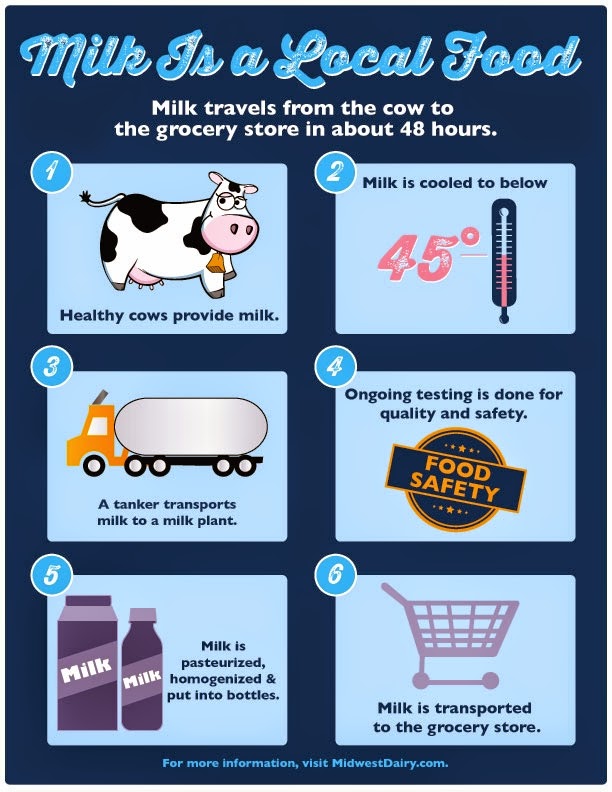 2017; 31(1 Supplement): 650–19 (Journal FASEB. 2017; 31 (Appendix 1): 650–19).
2017; 31(1 Supplement): 650–19 (Journal FASEB. 2017; 31 (Appendix 1): 650–19).
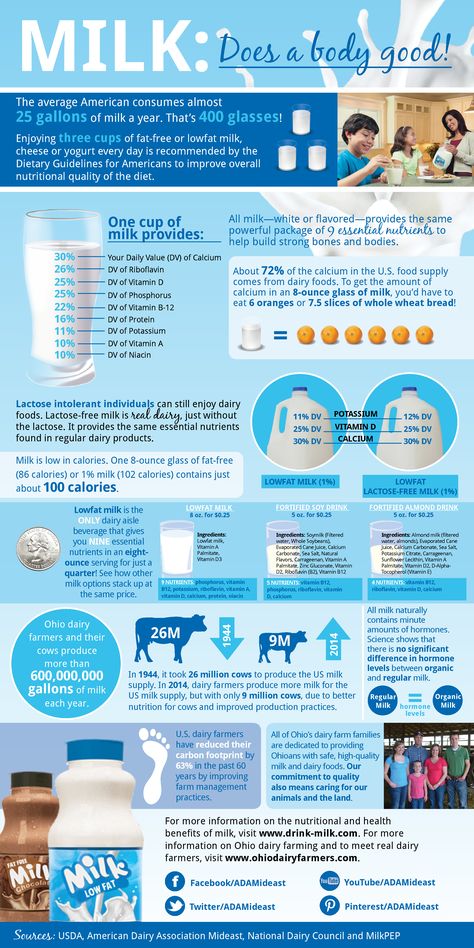 Children's Diseases Embryo. and Neonatol. Edition) 2001; 85(2): F91–5.
Children's Diseases Embryo. and Neonatol. Edition) 2001; 85(2): F91–5. 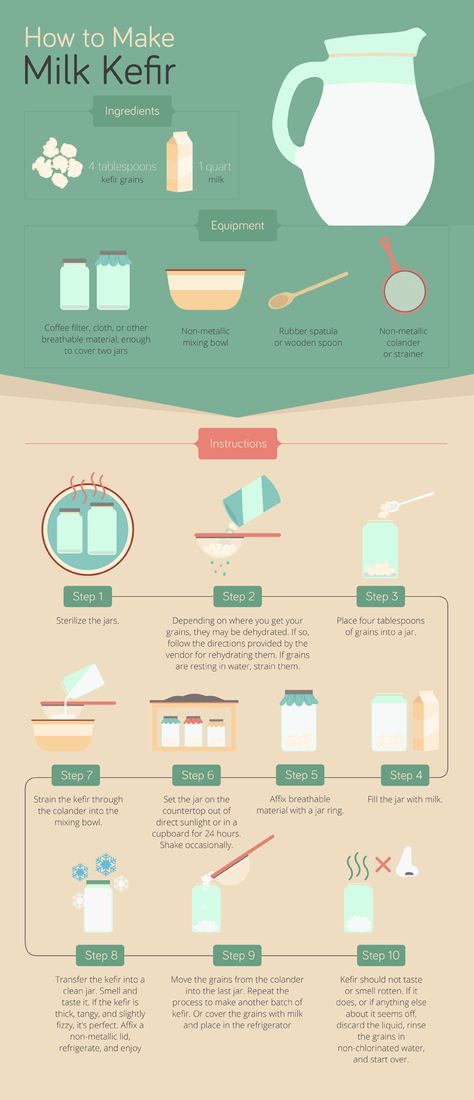 (Keith D.R. et al.) The Effect of music-based listening interventions on the volume, fat content, and caloric content of breast milk–Produced by mothers of premature and critically ill infants music on the volume, fat content and calorie content of breast milk of mothers of prematurely born and critically ill babies) . Adv Neonatal Care. (Advances in Neonatal Care) 2012; 12(2): 112– breast milk J Obstet Gynecol Neonatal Nurs. 2) 41(1): 114–21.
(Keith D.R. et al.) The Effect of music-based listening interventions on the volume, fat content, and caloric content of breast milk–Produced by mothers of premature and critically ill infants music on the volume, fat content and calorie content of breast milk of mothers of prematurely born and critically ill babies) . Adv Neonatal Care. (Advances in Neonatal Care) 2012; 12(2): 112– breast milk J Obstet Gynecol Neonatal Nurs. 2) 41(1): 114–21. 